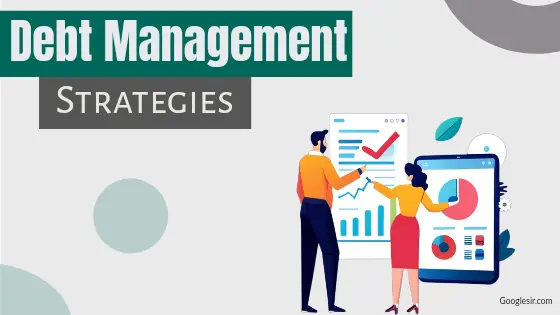Navigating through the treacherous waters of business debt requires a captain who’s not only skilled at steering but also adept at using the right tools and tactics.
You’re at the helm, and the survival of your ship—your business—depends on how effectively you manage your debt. By reworking your budget, enhancing cash flow, and prioritizing your debts, you’re already setting sail in the right direction.
However, the voyage doesn’t end here. Refinancing loans, boosting sales, and cutting unnecessary costs are just a few of the strategies that lie ahead. Join the conversation to uncover how these tactics can be your compass to not just stay afloat but to navigate towards financial stability.
Rework Business Budget
Reworking your business’s budget is a crucial step in managing your finances and reducing debt, as it involves a meticulous assessment of income sources, variable expenses, and fixed costs. First, you need to identify all income sources. This isn’t just about recognizing your main revenue streams but also about uncovering potential areas you’ve overlooked that could be optimized for better cash inflow.
Next, scrutinize your variable expenses. These are costs that fluctuate based on your business activity. By understanding these, you can pinpoint areas where spending can be more controlled or reduced without compromising the quality of your product or service.
Fixed costs, on the other hand, are your constant expenses, such as rent and salaries. While these might seem rigid, evaluating them allows you to question their necessity and seek more cost-effective alternatives if available.
It’s also wise to seek professional advice from an accountant. They can offer insights and strategies to optimize your budget more effectively than you might on your own. Establishing a habit of setting money aside and regularly fine-tuning your budget will ensure you’re always prepared for financial obligations, ultimately granting you the freedom to operate your business with confidence and agility.
Enhance Cash Flow
To enhance your business’s cash flow, it’s critical to implement efficient billing systems and reduce unnecessary expenses. By streamlining your invoicing process, you ensure timely payment collection, directly impacting your financial stability.
Simultaneously, cutting down on non-essential spending helps preserve cash, enabling you to meet obligations without resorting to high-interest borrowing.
Implement Efficient Billing Systems
Implementing efficient billing systems can significantly enhance your business’s cash flow by reducing billing errors and expediting the invoicing process. By streamlining these processes, you ensure timely and accurate billing for services, which is crucial for maintaining a steady cash flow.
Automation plays a pivotal role here, slashing administrative costs linked to manual invoicing by 30-50%. Moreover, embracing online billing platforms can quicken payment speeds by an impressive 73% over traditional methods. These systems aren’t just about speed; they also provide vital tracking of outstanding invoices, cutting down the average collection period by up to 20%.
This methodical approach not only streamlines your operations but grants you the freedom to focus on growth, rather than being bogged down by financial inefficiencies.
Reduce Unnecessary Expenses
Analyzing your business’s expenses meticulously can unveil opportunities to slash unnecessary costs, thereby bolstering your cash flow and easing the burden of debt. By identifying and eliminating non-essential expenses, you’re not just trimming fat; you’re freeing up vital funds that can be redirected toward debt repayment and fostering growth.
Implementing cost-saving measures, grounded in a detailed review of your expenditures, can yield substantial savings over time. Regular monitoring of expenses sharpens your financial decision-making, significantly aiding in debt management. Furthermore, leveraging budgeting tools and financial reports will spotlight areas ripe for cost reduction.
Such strategic moves optimize cash flow, ensuring you navigate the financial landscape with greater agility and purpose, ultimately steering your business towards a more liberated and financially sustainable future.
Prioritize Debts
Identifying and prioritizing high-interest loans and overdue payments is a crucial step in managing your business’s debt effectively. When you focus on these critical areas, you’re taking decisive action towards securing your financial freedom. It’s not just about paying off debts; it’s about strategically navigating through them to ensure your business emerges stronger and more resilient.
To achieve this, consider the following steps:
- Identify High-Interest Debts: Start by listing out all your debts and their interest rates. High-interest loans, typically credit cards or unsecured business loans, should be at the top of your repayment plan.
- Assess Overdue Payments: Evaluate which debts are overdue and could lead to severe penalties or legal actions. Prioritizing these payments can prevent additional charges and protect your business’s reputation.
- Analyze Financial Impact: Understand how each debt affects your cash flow and overall financial health. This analysis will guide your decision-making process, ensuring resources are allocated efficiently.
- Implement a Payment Strategy: Allocate your resources to pay off prioritized debts first. This focused approach can lead to quicker debt reduction, improving your financial flexibility and stability.
Refinance Loans
When you’re managing your business’s debt, refinancing loans emerges as a strategic move to secure lower interest rates. This action enables you to extend payment terms, making monthly obligations more manageable.
Lower Interest Rates
Refinancing your business loans can be a strategic move to secure lower interest rates and decrease the overall debt burden. By taking this proactive step, you’re not just managing your debt; you’re setting your business free to thrive.
Let’s break down the process:
- Review current loans: Regularly assess loan terms and market conditions.
- Identify refinancing opportunities: Look for loans with significantly lower interest rates.
- Calculate potential savings: Understand how much you could save over the life of the loan.
- Allocate saved funds wisely: Redirect the savings towards growth and operational improvements.
This methodical approach not only enhances your financial stability but also ensures long-term sustainability. By lowering your interest rates, you’re effectively unlocking more resources to fuel your business’s growth and freedom.
Extended Payment Terms
Building on the strategy of securing lower interest rates, extending payment terms through loan refinancing can further enhance your business’s cash flow management. By spreading out loan repayments over a longer period, you’re not just managing cash flow more effectively; you’re also reducing the monthly payments and the overall debt burden.
Negotiating these extended terms with lenders offers crucial breathing room, especially when financial challenges loom large. Refinancing isn’t just about easing current pressures—it’s a strategic move to secure better terms and conditions, potentially saving significant sums in the long run.
This approach not only bolsters financial stability but also grants your business the flexibility to navigate operations more freely, aligning with your desire for autonomy and control over your financial destiny.
Boost Profitable Sales
To boost profitable sales, you must frequently focus on maximizing revenue by honing in on your business’s profit drivers. In the pursuit of financial liberation, it’s essential to methodically increase your sales in a way that significantly raises your bottom line. Here’s how you can achieve this:
- Review and adjust your pricing strategies: Ensure your prices are competitive yet profitable. Regularly assessing your pricing model in relation to market demand and production costs can lead to increased margins.
- Identify and eliminate unprofitable products or services: Not all sales contribute positively to your profit. Scrutinize your offerings and discontinue those that drain your resources without yielding sufficient returns.
- Allocate more resources to high-margin areas: Invest in areas of your business that promise higher returns. This could mean expanding profitable lines or improving marketing for high-margin products.
- Sell unnecessary assets: Sometimes, the key to generating more funds for growth isn’t in creating sales but in liquidating what you don’t need. This step can improve cash flow, allowing you to reduce debt and reinvest in more lucrative ventures.
Cut Unnecessary Costs
After boosting profitable sales, it’s crucial to scrutinize your operational expenses, identifying and eliminating non-essential costs to further enhance your financial health. Delving into your business’s operational costs, subscriptions, and services with a fine-tooth comb allows you to pinpoint areas ripe for cost reduction. This analytical approach not only frees up funds for debt repayment but also improves your cash flow, contributing significantly to your debt reduction efforts.
Analyzing your spending patterns with precision, prioritize your expenses to ensure that only the essential costs are maintained while the excess is trimmed away. This methodical process of elimination isn’t about cutting corners but rather streamlining your budget to align with your business’s financial goals and debt management plans. By implementing these cost-saving measures, you’re not just reacting to current financial pressures but also paving the way for long-term financial stability and success in debt management.
Leverage Asset Management
Leveraging your business assets effectively can serve as a cornerstone strategy in managing and reducing debt. By methodically evaluating and utilizing what you own, you’re not just surviving; you’re strategically battling against financial constraints to secure your business’s freedom.
Here’s how to navigate this process:
- Identify Underutilized Assets: Audit your assets to pinpoint those that aren’t fully leveraged. This could be real estate, equipment, or technology that’s sitting idle. These resources can either be sold for immediate cash or used more effectively to boost revenue.
- Asset Liquidation for Debt Repayment: Determine non-essential assets that can be liquidated without harming your operational capacity. Selling these assets provides a direct influx of cash to reduce outstanding debts, enhancing your financial liberty.
- Invest in Revenue-Generating Assets: Redirect resources towards assets or opportunities with a high return on investment. This strategy not only contributes to debt repayment but also strengthens your business’s earning potential.
- Maintenance and Maximization: Regularly maintain and upgrade assets to preserve or increase their value. A well-maintained asset ensures operational efficiency, reduces unexpected costs, and supports long-term debt management strategies.
Explore Debt Financing Options
Exploring debt financing options offers businesses a pathway to secure necessary funds while maintaining operational liquidity. You’ve got a range of choices, each with its unique benefits, tailored to different business needs. Bank loans, for instance, provide a structured way to finance your operations or expansion plans. You can opt for fixed or variable interest rates, depending on what aligns best with your financial strategy. The predictability of structured repayment terms helps in planning your finances effectively.
Lines of credit stand out for their flexibility. You’re not fixed into borrowing a lump sum; instead, you can draw funds as needed, making it ideal for managing cash flow fluctuations. This adaptability ensures you’re not paying interest on unused funds, a smart move for cost-conscious businesses.
For acquiring assets like machinery, equipment financing is your go-to. The financed item often serves as collateral, potentially offering lower interest rates. This option gears you up for productivity without a hefty upfront investment.
Lastly, trade credit can be a strategic tool for managing inventory without draining cash reserves. It allows you to purchase goods on credit, deferring payment and aiding in smoother cash flow management. Each of these options opens a door to strategic financial planning, offering you the freedom to choose what best suits your business’s growth trajectory.
Conclusion
In conclusion, effectively managing your business’s debt isn’t just wise—it’s essential for survival. By refining your budget, enhancing cash flow, and prioritizing debt payments, you’re setting a solid foundation.
Consider this: businesses that actively pursue debt management strategies are 20% more likely to experience growth. Refinancing, cutting costs, and optimizing sales are critical steps.
Remember, leveraging assets and exploring financing options can provide the flexibility needed to navigate financial challenges. Methodically apply these tactics to ensure your business’s financial health and growth.











